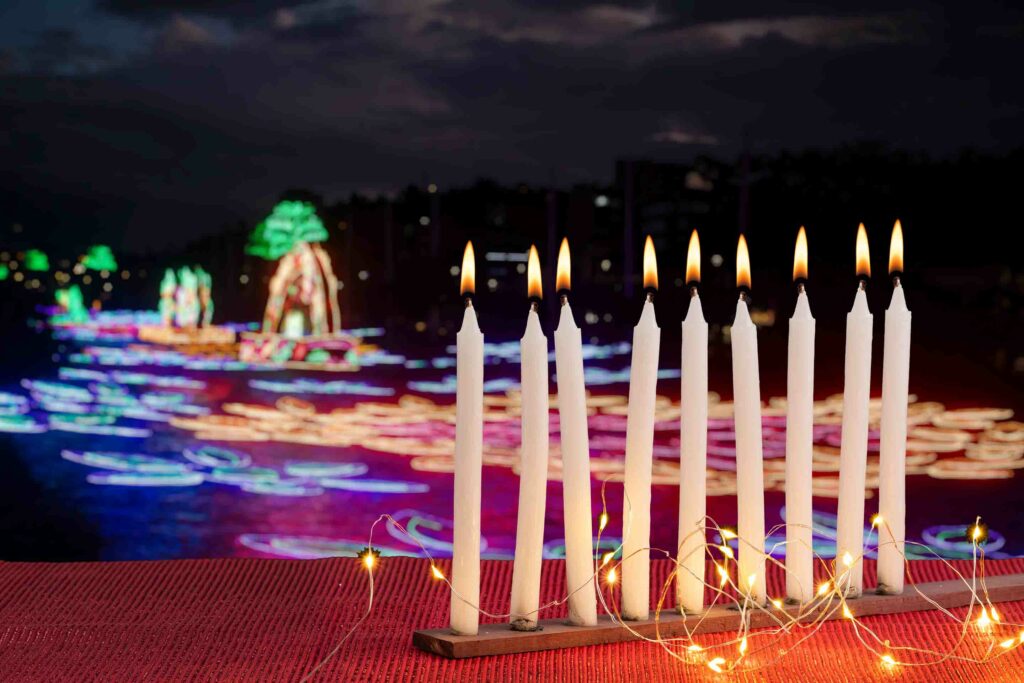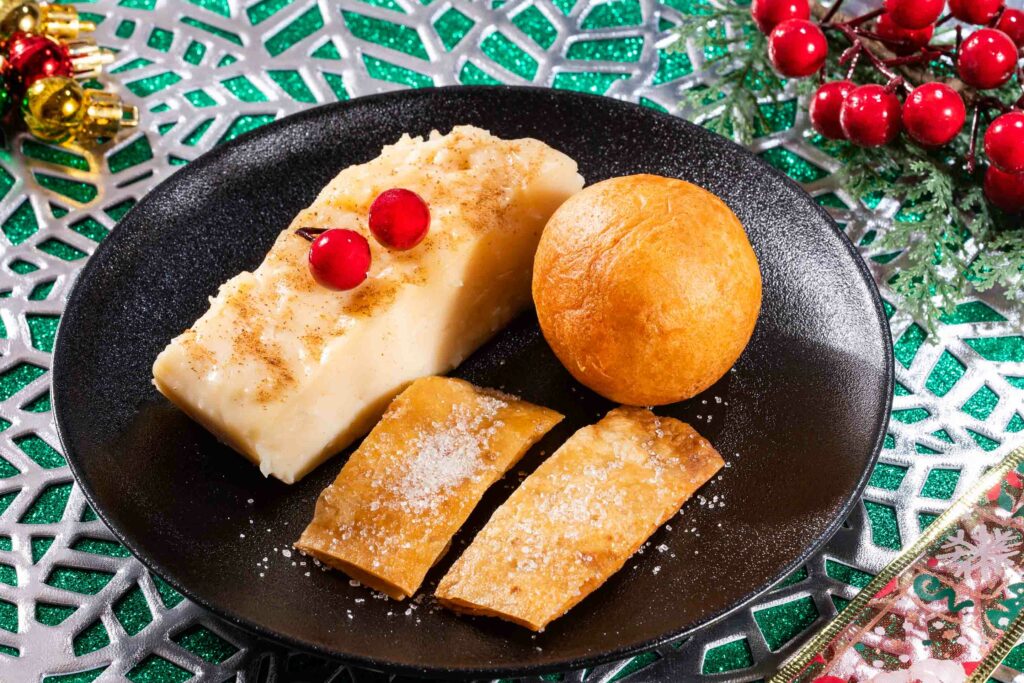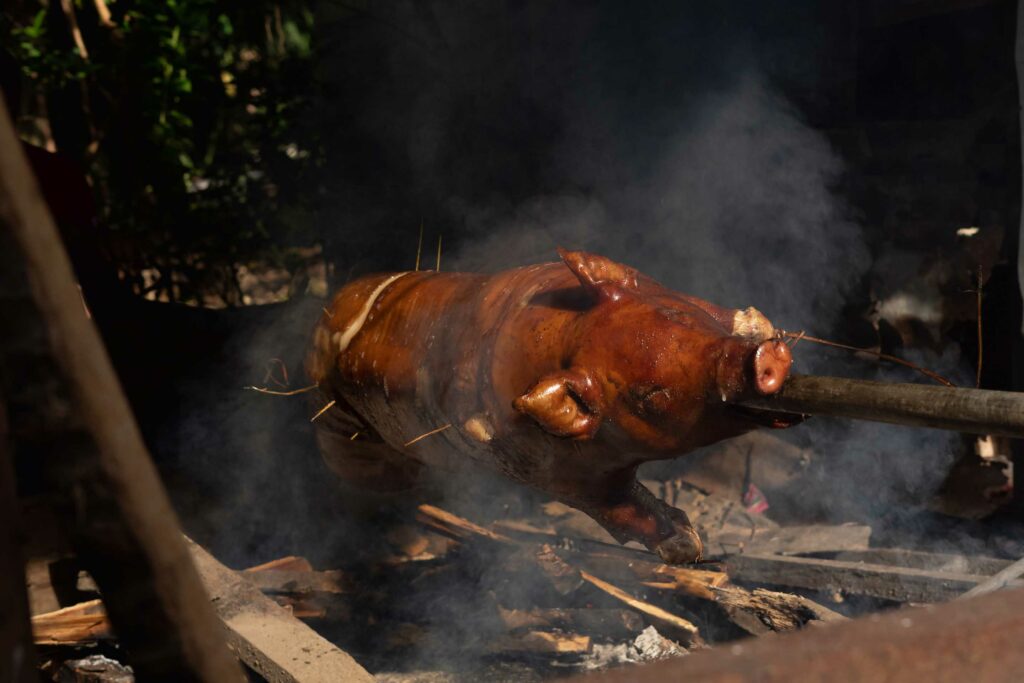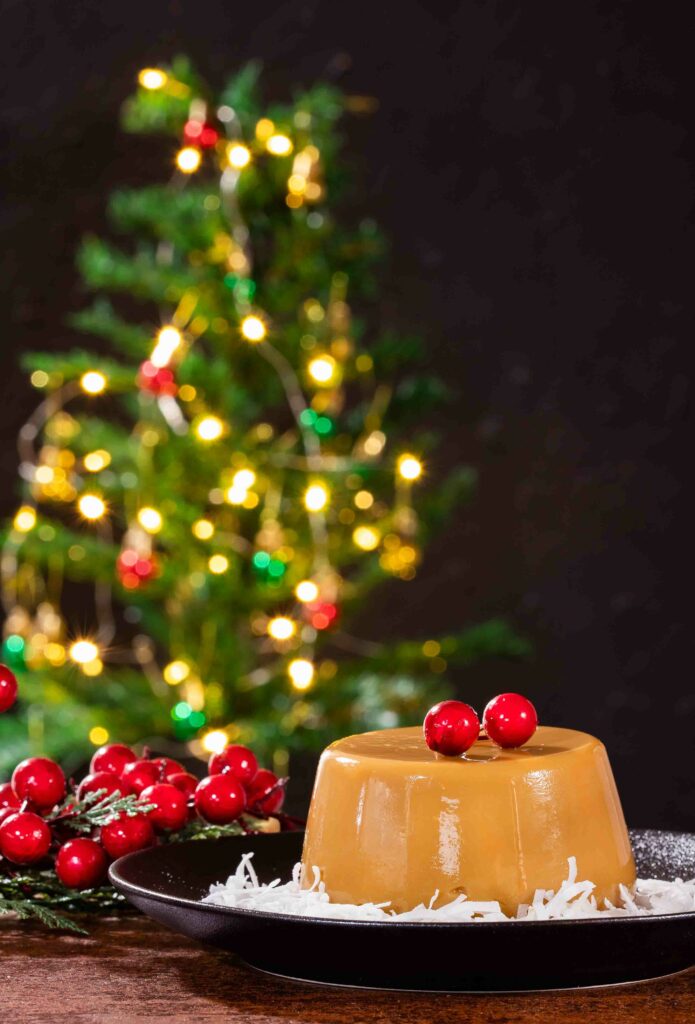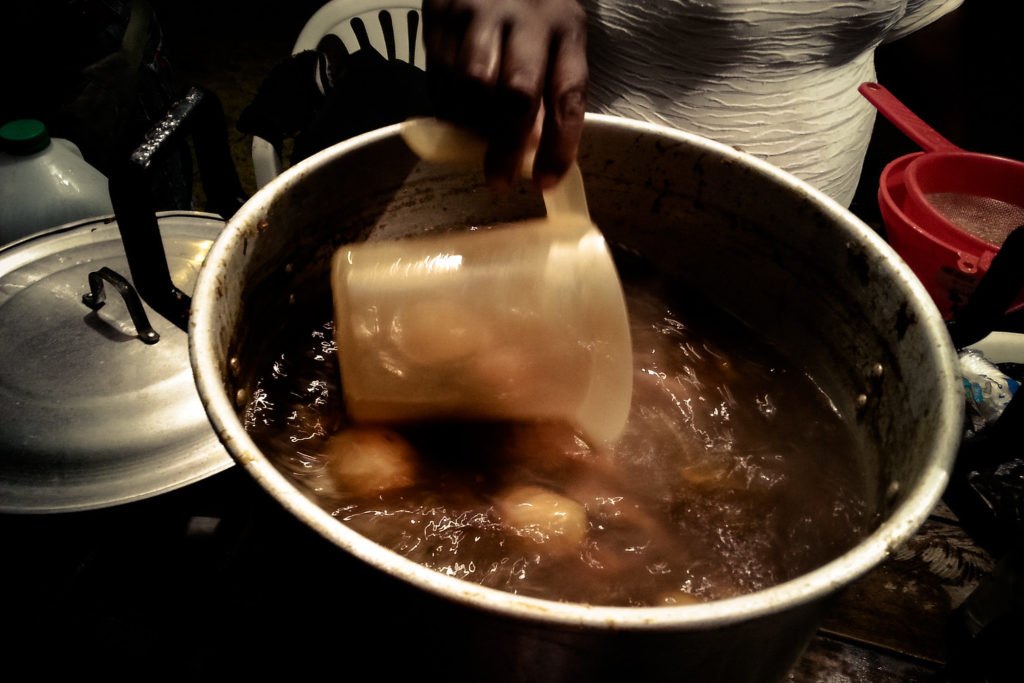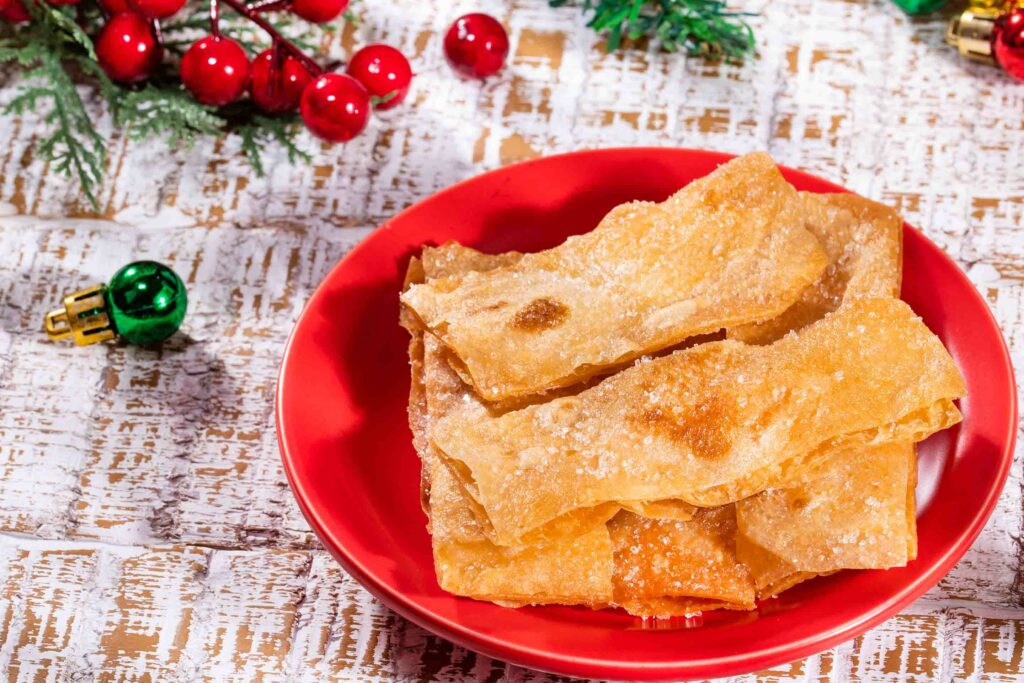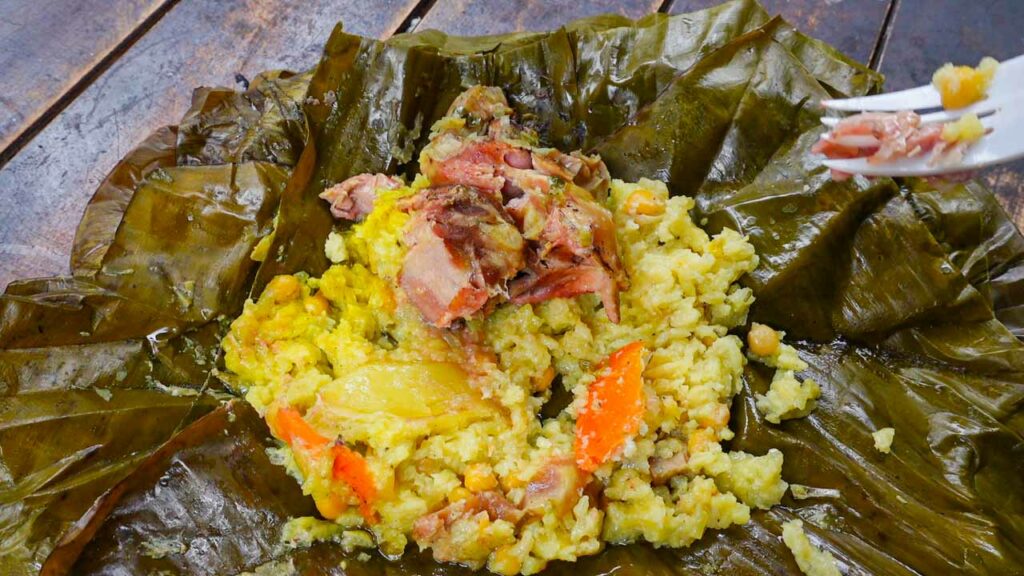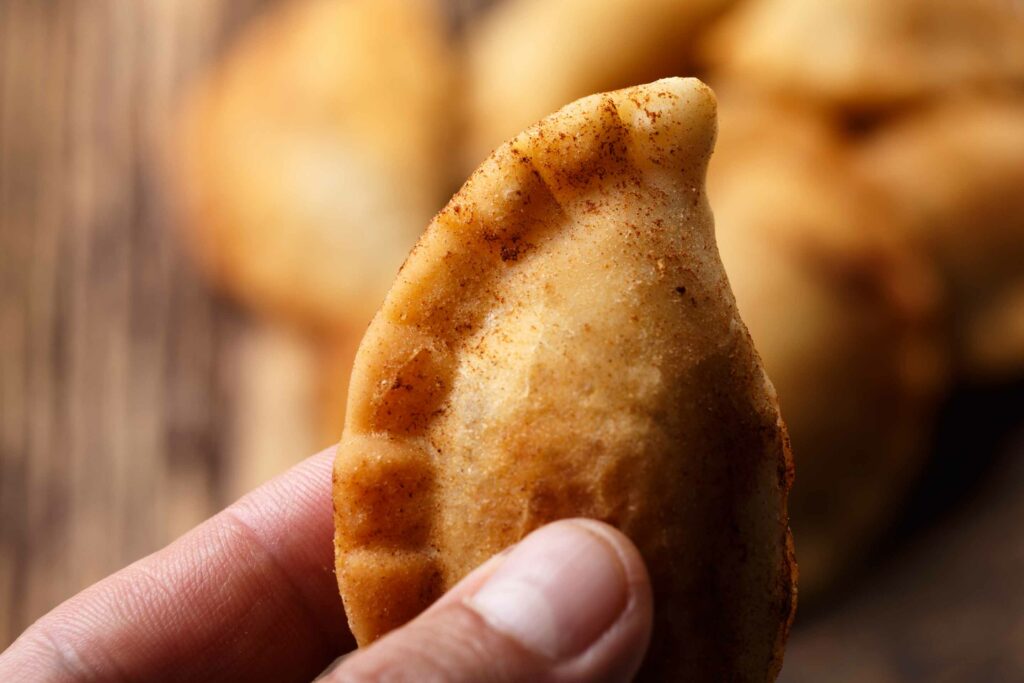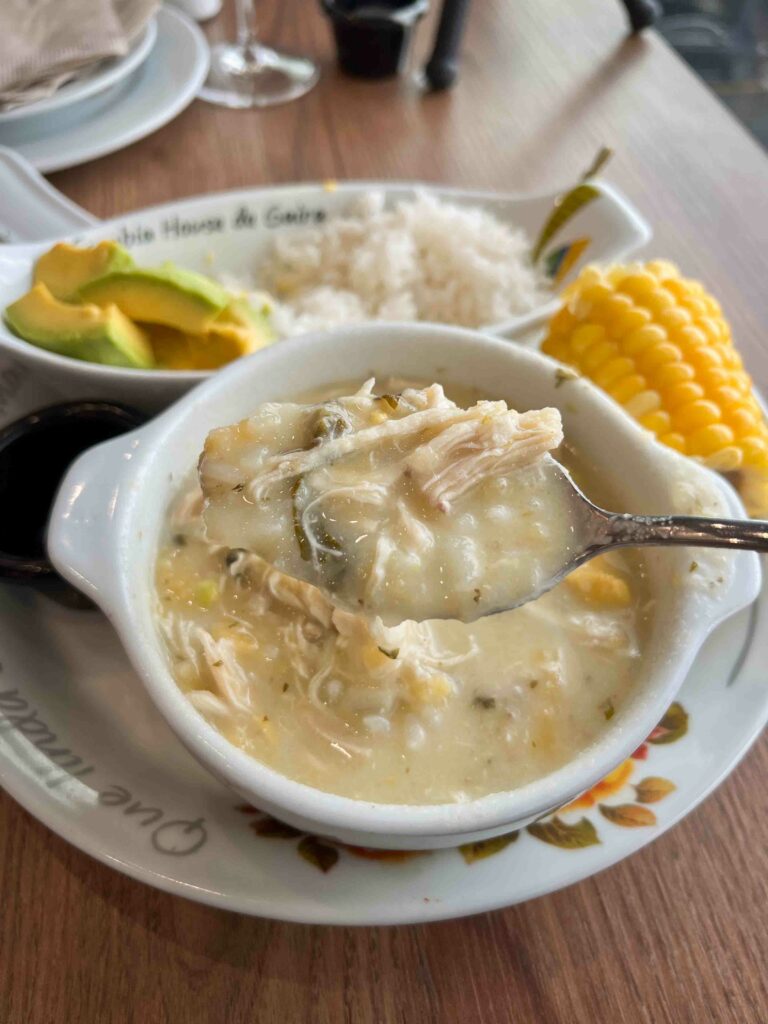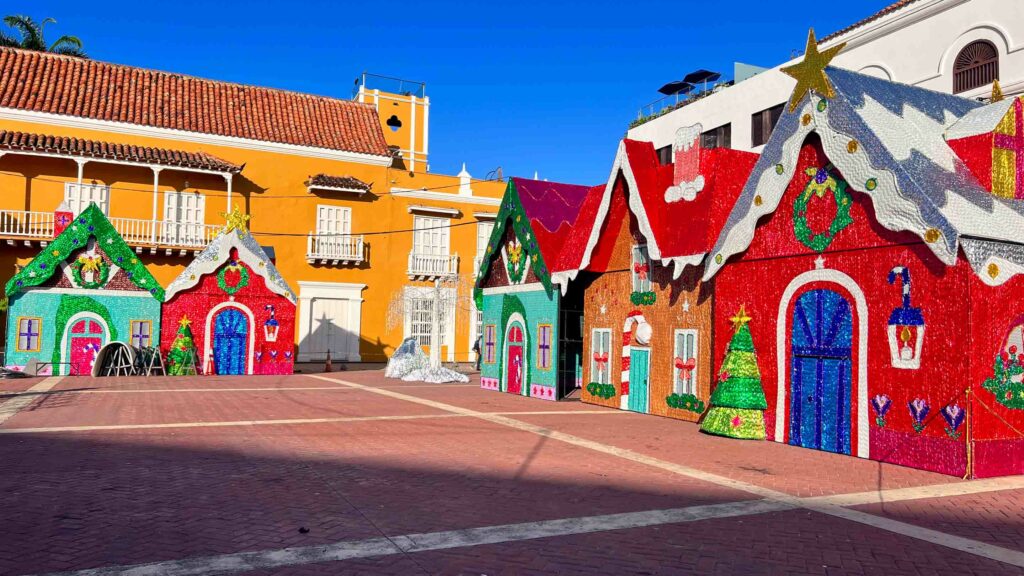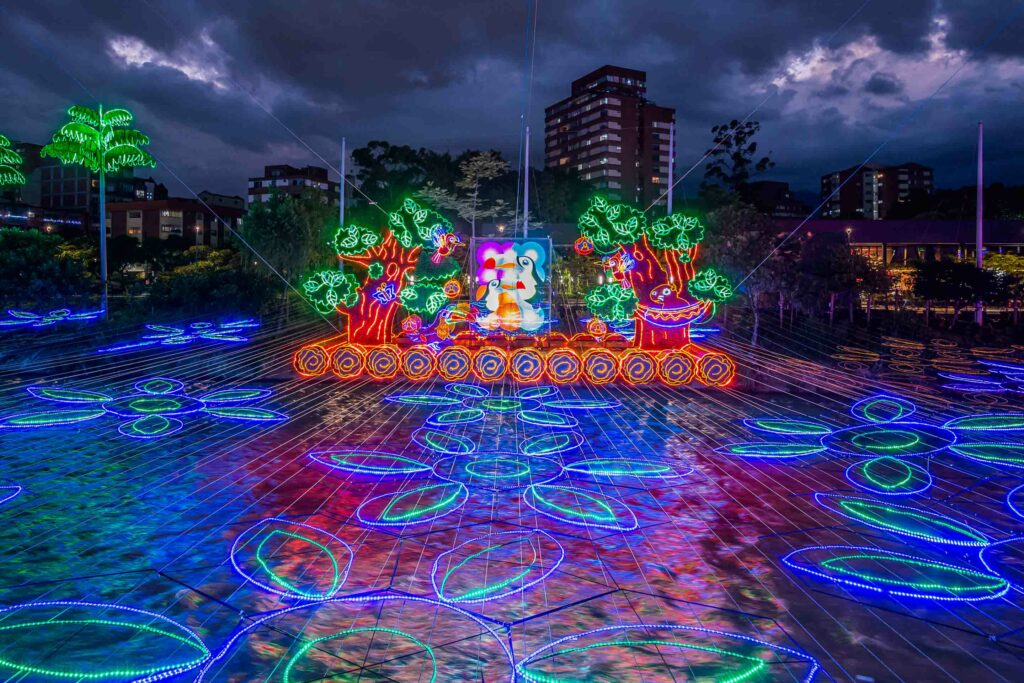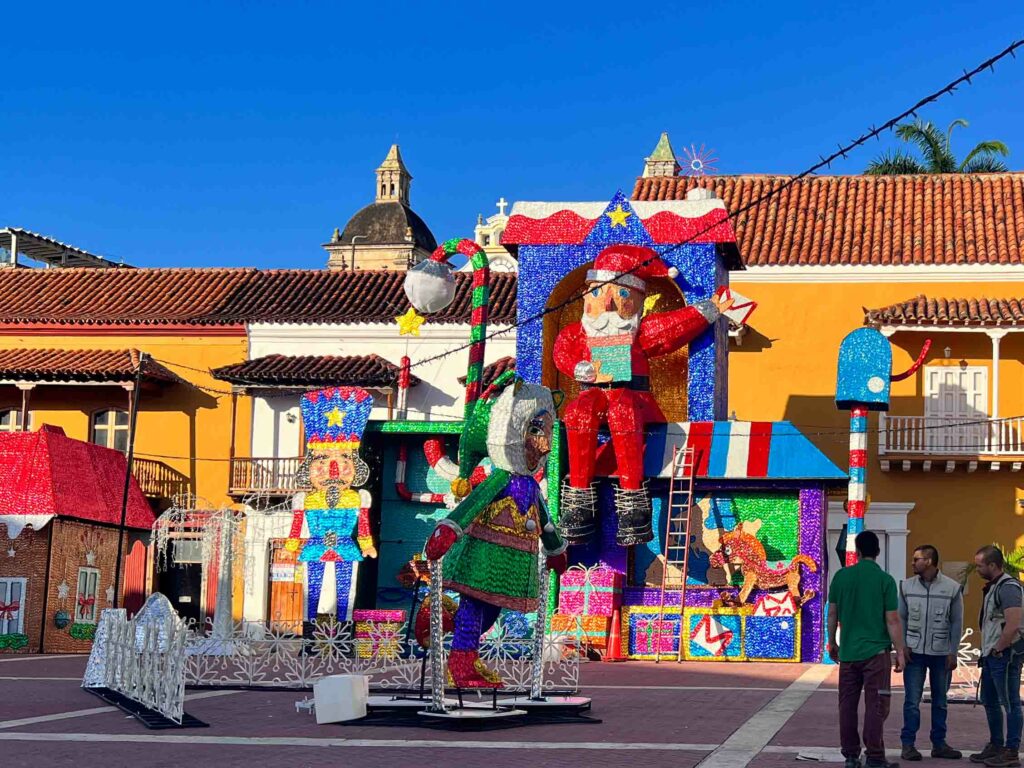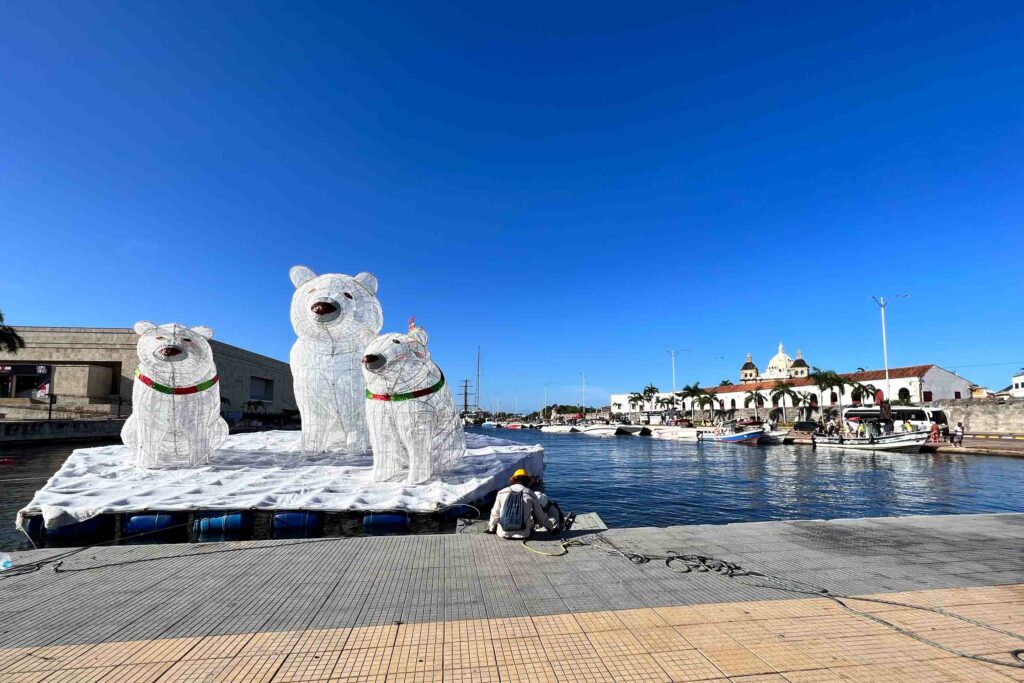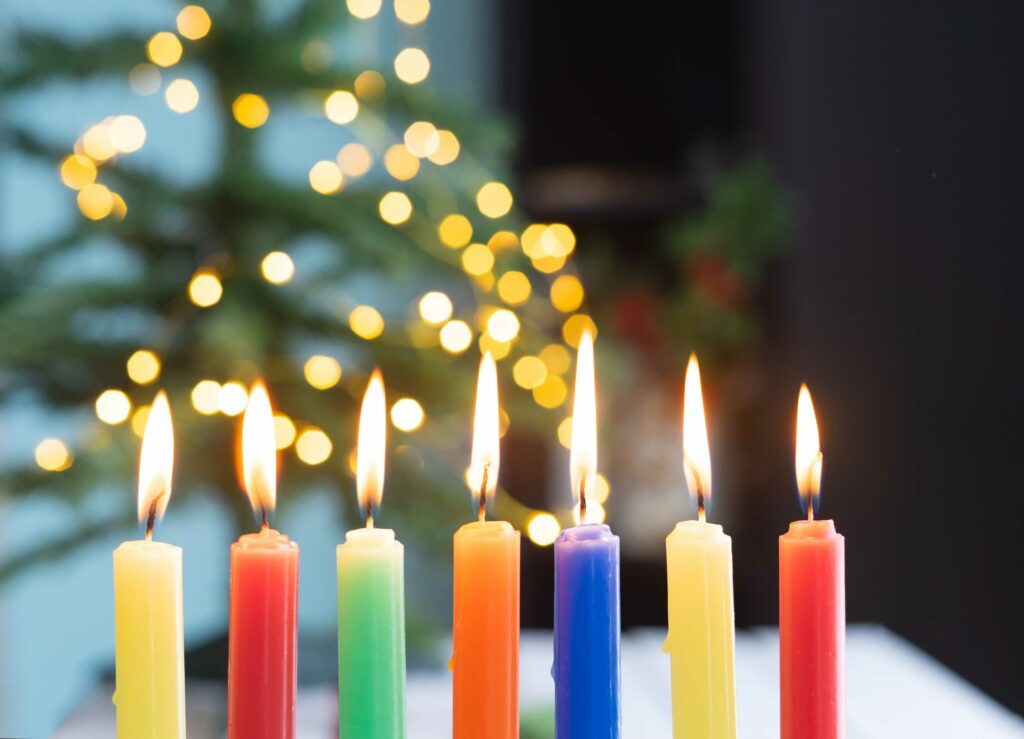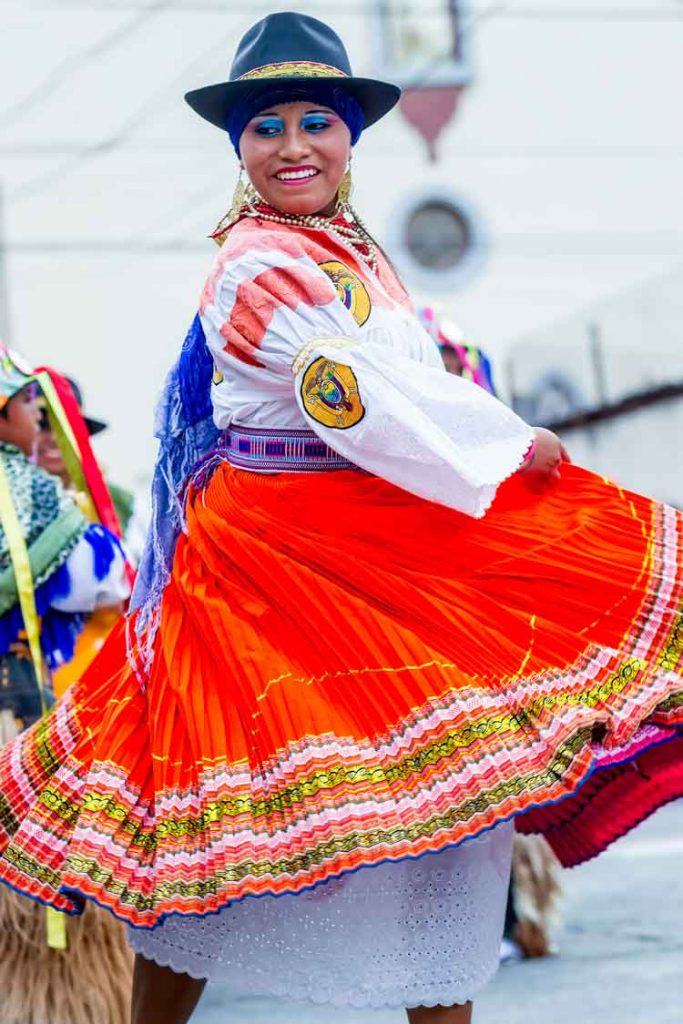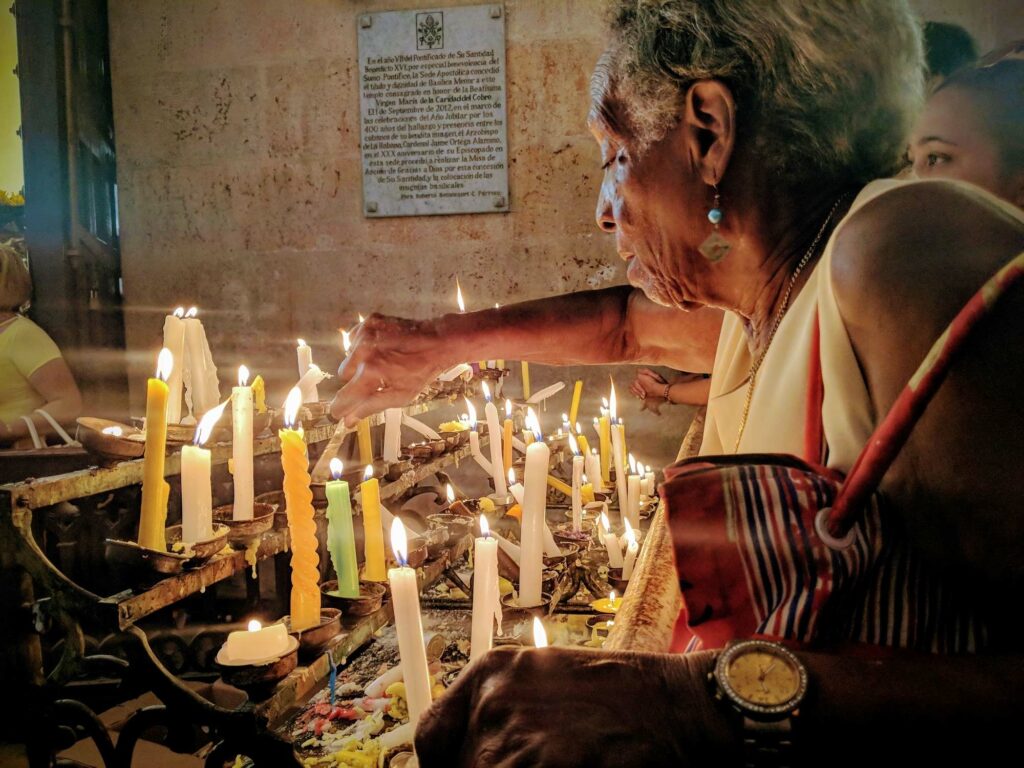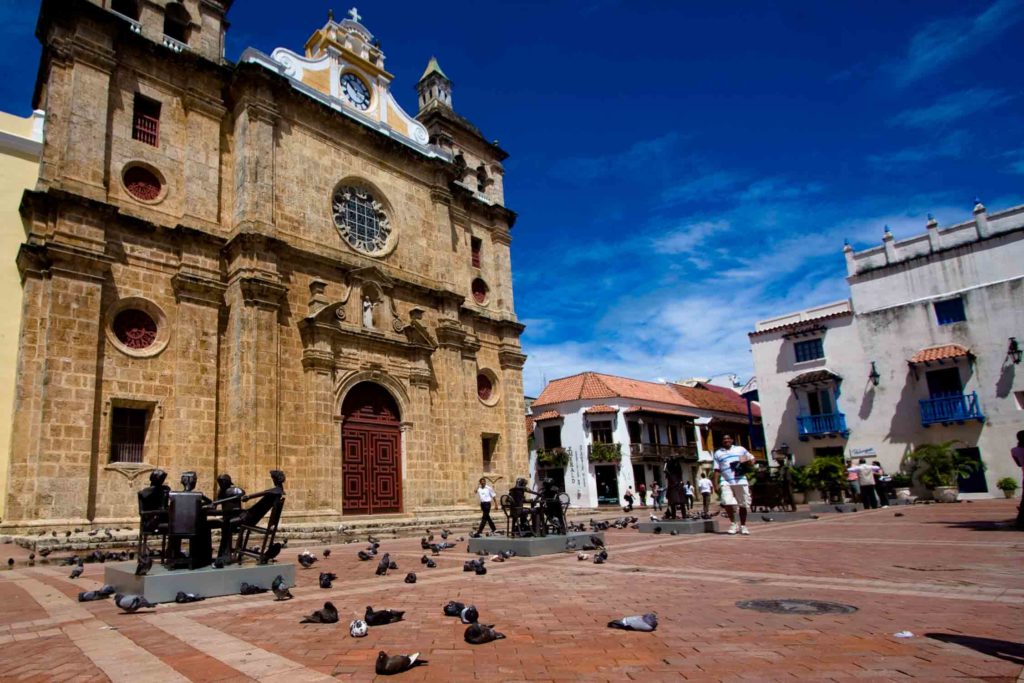Christmas is one of the most celebrated holidays around the world. But Christmas in Colombia is the biggest celebration of them all.
Colombians literally wait the entire year for holiday season. There is even a term in Colombia called “recibir diciembre“, which translates directly to “welcoming December”.
A primarily Catholic country, Christmas is an important in Colombia and the celebrations begin in the first week of December.
On December 7th Colombians begin Christmas traditions with Día de las Velitas or “day of the little candles”. From there on, the celebrations continue until Christmas eve which is the main Christmas celebration in Colombia.
The festivities also carry on after the Christmas celebrations have taken place. The 28th of December sees the celebration of El Día de Los Inocentes.
And then it’s onto New Year’s Eve, which is an entirely different celebration on its own.
Christmas in Colombia Key Dates
Now, it is important to note that Christmas in Colombia isn’t just a quick event. It builds all month up to the major celebrations on the eve of the 24th of December.
Colombians have a number of important dates leading up to the festivities, starting on the 7th of December.
In fact, most Colombians look forward to the Christmas season months ahead of the time. They even start eagerly anticipating the festivities as early on as the beginning of the year.
Here are the major dates that are celebrated in the build up to Christmas in Colombia.
PLANNING A TRIP TO COLOMBIA?
Colombian Food
Traditional Drinks in Colombia
Most Popular Colombian Breakfasts
Tasty Colombian Desserts
December 7th – Día de las Velitas
The 7th of December marks the official start of the Christmas period. On December 7th families’ light candles around their houses, on their balconies, and form pathways in the street.
Major squares will be completely lit with candles.
This is to honor the Virgin Mary as this is the Catholic day of the immaculate conception. The day is aptly named Día de las Velitas or “day of the little candles”.
It is also the first time that the Christmas lights are turned on.
The Christmas lights, known as Alumbrados Navideños, are a real spectacle throughout the country.
December 16th – Novenas
From the 16th of December until Christmas Eve on the 24th Colombians spend time with family, friends, and neighbors for the “novenas”.
During these times, each household will host on a different evening where prayers will be said and appreciation given.
This is also celebrated during Christmas in Ecuador and Venezuela.
It’s a centuries-old tradition rooted in the Novena de Aguinaldos. It is a litany of prayers written by Catholic priest Fray Fernando Larrea over three centuries ago.
The Novena was commissioned by Clemencia de Jesus Caycedo. He was a pioneering educator from New Grenada who established the La Enseñanza teaching school in Santa Fé de Bogotá.
This nine-day series of prayers and gatherings beginning on December 16th culminates with a magnificent celebration on Christmas Eve.
Throughout the Novena de Aguinaldos, various activities take place that add color and fun to the festivities. Some of these activities include:
- Playing games: Traditional Colombian games such as ‘trompo’ (spinning top) and ‘ponerle la cola al burro’ (pin the tail on the donkey).
- Singing carols: Everyone joins in singing popular Colombian Christmas carols and songs.
- Creating nativity scenes: Elaborate nativity scenes called pesebres depicting the birth of Jesus are built.
December 24th – Noche Buena
Much like many other countries in Latin America, the most important night is not Christmas Day but Christmas Eve.
Many families attend the traditional Misa de Gallo (Midnight Mass) and return home for a festive meal.
Afterward, children usually find their presents placed under the Christmas tree or by the nativity scene.
It is traditional brought by El Niño Dios (Baby Jesus) but Santa Claus is becoming more and more prevalent..
One house often hosts the festivities for the entire family. The evening is full of dancing, drinking, and of course, eating.
The festivities can go on until late in the night – and even early the next morning. For this reason, most Colombians take it rather easy on the 25th of December.
December 28th – El Día de Los Inocentes
The 28th of December is known as “el Día de Los Inocentes.” It literally translates to the Day of the Innocents and is essentially April Fool’s Day.
While the origins of the day are quite sad, it is a fun-filled day in modern times.
Many people tell jokes and make fun of the previous year’s mishaps.
There are even televised bloopers. Programs show funny mistakes that have occurred over that past year for people to enjoy and laugh at.
Colombian Christmas Food
To go with the big celebrations and the Colombian Christmas traditions is the food. Food is a big deal in Colombia, and it is no different around the Christmas period.
There are also a few special dishes that get prepared and are generally consumed before the midnight mass.
Lechona
Who wants dry turkey when you can have delicious pork!
Lechona is a delicious, slow-cooked pork roast that has a filling of peas and rice.
Sometimes the entire suckling pig is roasted. And while not all families have the space for it they will order from restaurants who can roast it whole for them..
Colombian Street Food
Torta Negra or Torta Envinada
Colombia’s version of fruit case, torta negra translates directly to black cake. It is popular during important occasions like weddings but also at Christmas.
It’s very similar to Christmas traditions in Jamaica and the Caribbean as it includes wine, dried figs, raisins, and rum.
Natilla
Natilla is probably considered to be the most loved Christmas food item.
This flan-like pudding is made with milk and has a custard consistency. Depending on where you eat it natilla may have coconut or fig.
Dulce de Nochebuena
A mix of exotic fruits in syrup, served differently by region based on what is local and available at the time.
Dulce de Nochebuena is sually made with papaya, figs, and lime in syrup, served with almojábanas, cheese, hojuelas, and buñuelos.
The sweet and salty mix is amazing!
Canelazo
Canelazo is one of the top traditional Colombian drink traditions for the adults in the Andes
While the children will sip on a hot chocolate, the adults will indulge in the warm drink.
It is made up of sugar or panela, hot water, cinnamon, cloves, and a splash of aguardiente – an anise liqueur.
Alternatively , the adults might sip on another warm drink known as sabajon.
Similar to Cuban crema de vie, it is a richer, creamier drink made with milk, egg yolks, sugar, cinnamon, vanilla, and a bit of aguardiente or rum.
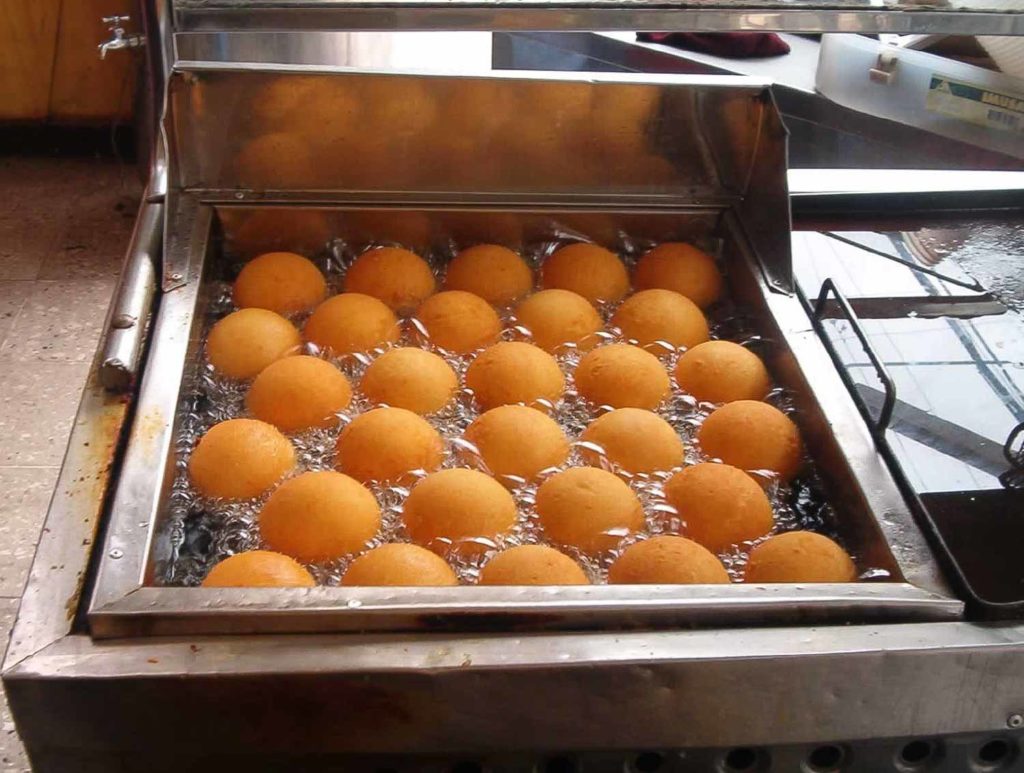
Buñuelos
Bunuelos are a Colombian fritter made from yuca flour, corn starch, and cheese.
These little balls of cheesy deliciousness area staple during the Colombian Christmas period. Although they are also eaten throughout the year at breakfast time.
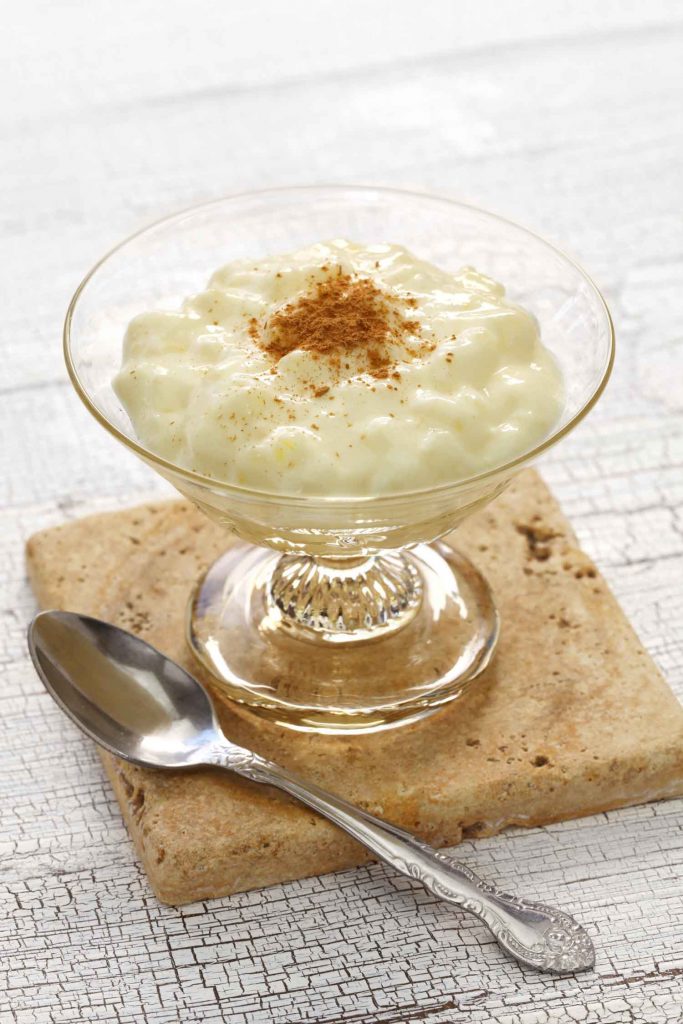
Arroz con Leche
Also known as rice pudding, arroz con leche is one of the most popular desserts in Latin America.
It’s a simple recipe of cooked rice, milk, sugar and cinnamon.
Hojuelas or Hojaldras
Hojuela means flake in Spanish. It is a traditional Colombian dessert during Holy Week and Christmas.
This fried pastry with sugar and jam is light and crispy, often dusted with sugar or drizzled with honey.
Tamales
A mixture of meat, vegetables, and rice wrapped in a banana leaf and steamed in banana or plantain leaves.
Tamales are popular all over the Andes. But the most popular are from Antioquia and Bogota, where they are called tamales Santafereños o Bogotános (from Santa Fe).
Empanadas
Empanadas are a staple in many South American countries, and Colombia is no exception.
These stuffed pastries can be filled with a variety of ingredients such as meat, cheese, or vegetables.
During the Christmas season, empanadas are often served as a delicious appetizer at family gatherings.
Ajiaco
Ajiaco is a traditional chicken and potato soup originally from Bogota.
It is perfect for Christmas as it’s hearty and comforting. It’s made with three kinds of potatoes, chicken, and corn and great to make in advance.
Colombian Christmas Traditions & Decorations
Each and every country around the world has its own unique set of Christmas traditions – and Colombia is no different.
They have their own set of unique traditions that have been passed on from generation to generation and continue to be practiced today.
There is always lots of singing, dancing, traditional music, and of course, delicious Colombian cuisine.
It is an incredibly festive and joyful time of the year where people surround themselves with friends and family.
The planning and the anticipation begins right at the start of every year so that nothing is forgotten.
Aguinaldos
Christmas in Colombia is joyful and fun, with lots of laughs, love, and good times.
The aguinaldos are a fun set of games that Colombians play to make their friends, family, and loved ones work for their presents.
These games and challenges continue up until Christmas Eve when the presents are finally handed out.
Some of the most common games include “tres pies” (three feet), “pajita en boca” (straw in the mouth), and “beso robado” (stolen kiss).
Alumbrados Navideños
One of the most famous Colombian Christmas traditions are the “Alumbrados Navideños” – the Christmas lights.
Keeping in the Colombian ways, there is no short cut here and the light displays are a big deal.
The Alboradas in Medellin
In the city of Medellin, the alboradas kick off the Christmas season on December 1st, earlier than the rest of the country. It sets a festive tone for the entire month.
During this event, a full ton of fireworks is blown up, and locals set off firecrackers throughout the city.
The spectacular display of color and light captures the essence of the holiday spirit, despite the controversies surrounding safety concerns and noise issues.
This is especially true in Medellin with its amazing light display along the river. The best spots to see these alboradas are at the Parque del Río and on top of Cerro Nutibara.
The light display is the city’s biggest tourist attraction and has a whopping budget of $10 million.
Nativity Scenes (Pesebres) and Christmas Trees
In Colombia, both Christmas trees and nativity scenes, known as pesebres. They are crucial decorations found in homes, churches and public places.
The detailed and elaborate pesebres depict the stable with Baby Jesus, Virgin Mary, and Joseph, alongside shepherds, animals, and other essential Christmas symbolism.
These scenes are typically set up early in December and remain on display throughout the holiday season, serving as a central focus for family gatherings and celebrations.
Santa Claus in Colombian Culture
In Colombia, the figure of Santa Claus holds a different place in their Christmas traditions as compared to some other countries.
Instead of Santa Claus, Niño Dios or Niño Jesús (Baby Jesus) is more popularly known for bringing gifts to children.
This symbol represents Jesus’s childhood and is a central figure during the festive season.
On the other hand, Santa Claus is known as Papá Noel in Colombia. He is still present during the Christmas season but is less prominent.
The decorations in malls and urban centers may feature him. And some Colombian families have merged the Santa Claus tradition within their celebrations.
In Colombian tradition, children write a letter to Niño Dios or Niño Jesús, requesting the gifts they desire for Christmas.
Families often pray to Niño Dios. They thank him for the blessings received throughout the year and asking for protection in the upcoming year.
Festive Music and Dance
Christmas in Colombia is a colorful, lively, and joyful time, filled with numerous festivities and traditions.
One of the major highlights of the season is the vibrant music and dance that fills the air across the country.
One of the most popular Christmas songs in Colombia is a classic cumbia called Tabaco y Ron.
This energetic beat captures the essence of the long-lasting rumba parties that Colombians partake in during the holiday season.
The chorus of the song celebrates the enjoyment of tobacco and rum, which are commonly associated with joyful gatherings.
In addition to cumbia, other traditional Colombian music genres, such as vallenato, salsa, and bambuco, also form an integral part of the Christmas soundtrack.
These musical styles are accompanied by traditional dances, creating an exciting and lively atmosphere.
Here are some of the most cherished Colombian Christmas songs:
- Villancicos – Traditional Christmas carols, often sung by family members around the nativity scene.
- El Burrito Sabanero – A well-known Venezuelan song adopted by Colombians, telling the story of a little donkey on its way to see the baby Jesus.
- Las Décimas de Gustavo ‘El Loco’ Quintero – Ten songs about Christmas in Medellín, sung by a famous Colombian singer, who humorously narrates the experiences of real people during the holidays.
During the Christmas season, concerts and performances abound throughout Colombia.
These showcases often feature a blend of traditional Colombian dances, such as cumbia and salsa, along with Christmas carols and other festive songs.
Cultural centers, theaters, and public parks become hubs for these lively events, attracting both tourists and locals alike.
How to Say Merry Christmas in Colombia
Colombia, being a Spanish speaking country, uses the greeting “Feliz Navidad” to say Merry Christmas to one another.
Colombia is a predominantly Catholic country, making up more than 90% of the population. So you tend to hear this more than the equivalent of happy holidays.
Christmas in Other Latin American Countries
Looking at Christmas traditions in Colombia, it’s interesting to also look at how they compare to other Latin American countries.
Ecuador
Like Colombia, Christmas in Ecuador is a big deal and I loved celebrating it in 2010.
In Ecuador, the Pase del Niño Viajero is a unique tradition celebrated on Christmas Eve.
It involves a grand parade where people dress up in colorful costumes and celebrate the birth of Jesus.
The focus is on family gatherings and sharing traditional Ecuadorian foods. Turkey is not common and when offered it’s not great so look for pork, pristiños (deep-fried pastries) and canelazo in the Ecuadorian Andes.
Argentina
Argentina also celebrates Christmas with an emphasis on family gatherings and delicious Argentinean food.
With summer weather during December, Argentinians often enjoy outdoor activities and barbecues as part of their festivities.
Midnight Mass is an important tradition, and people often light fireworks to celebrate the arrival of Christmas Day.
Cuba
Cuban Christmas celebrations were once subdued due to government restrictions, but in recent years, they have experienced a resurgence.
Today Christmas in Cuba is still not a big deal so if you want to avoid the holidays and explore Cuban food it’s a great place to go.
Families gather and attend Mass on Christmas Eve, called La Noche Buena. Afterward, if they can afford it they enjoy a traditional feast including roasted pork, rice, and black beans.
Mexico
Mexico has its own set of unique traditions during Christmas, such as Las Posadas, which are re-enactments of Mary and Joseph’s search for shelter.
This event takes place from December 16th to 24th with nightly processions and festivities. On Christmas Eve, families gather for the traditional Mexican dish bacalao (salted cod).
And do not miss traditional drinks in Mexico during the holidays especially if offered by a neighbor.
Costa Rica
Traditional Costa Rican food is most prominent during the holidays. Many families gather to maketamales together to share with friends and family during the holiday season.
As with Colombia’s Little Candles, Costa Ricans also celebrate the Immaculate Conception on December 8th with parades and festivities.
While Colombian Christmas traditions share several similarities with its neighboring countries, each Latin American country offers its own unique spin on celebrating the holiday season.
Colombia Weather in December
Colombia has a rather interesting topography – it spans from coastal areas that are at sea level, right up to mountainous areas in the Andes.
While the mountainous regions only make up around 25% of the country, they are home to about 75% of the population.
While Colombia is close to the equator and the weather fluctuations are rather minimal throughout the year, they do differ because of the changes in altitude.
Coastal Areas
The coastal areas of Colombia are generally always hot and humid. Take the Caribbean midlands, for example, which has an average temperature of 86°F.
Towns and cities that form part of the Antioquia Department such as Medellin experience a somewhat springlike climate.
Further down in the south, the city of Cali has a very similar climate and experience average low temperatures in the mid-60’s Fahrenheit.
Mountainous Areas (The Andes)
In contrast to the coastal regions, the mountainous areas of Colombia in the central Andes and the capital city of Bogotá are generally cold and rainy all year long.
This is due to their altitude. The rainy season in the mountainous areas generally occurs between the months of April and October, which means that Christmas in Colombia up in the mountains is generally dry and pleasant.
The months of December, January, and February are considered to be the best time of year to visit the capital city.
If I’m missed any of your favorite traditions from Christmas in Colombia let me know!
